» Australia
» China
» Denmark
» Egypt
» Germany
» Hong Kong
» Iceland
» Israel
» Indonesia
» Japan
» Korea
» Malaysia
» Nepal
» Palestine
» Portugal
» Singapore
» Spain
» Thailand
» The Netherlands
» Turkey
» United Kingdom
» Vietnam
Photo Albums
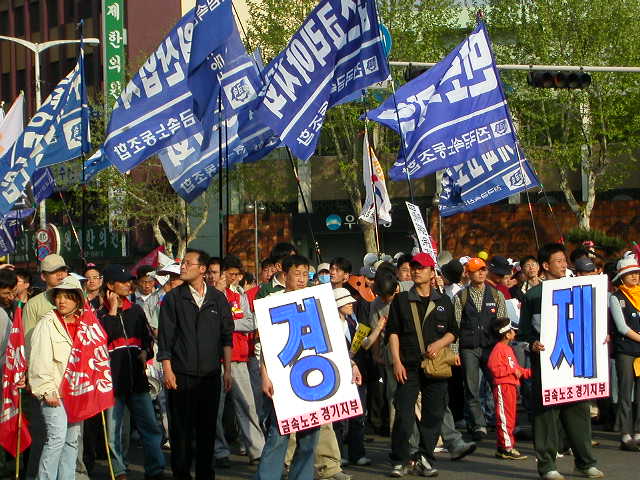
May Dal Protest: Seoul

Photo Gallery of Japan During Korean War
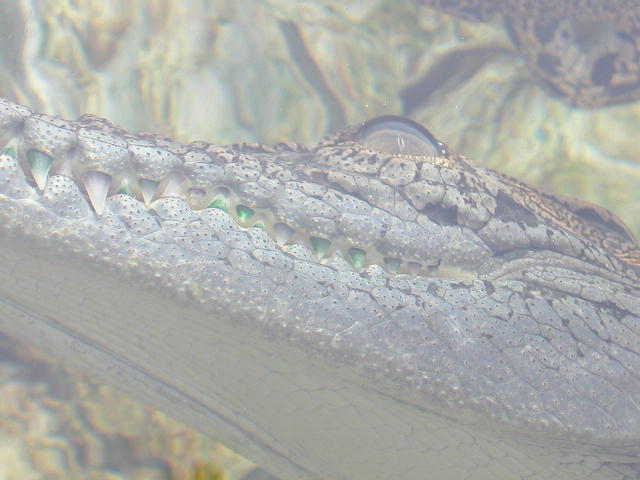
Korean Sights -- The Sights of Korea

The World of Flowers
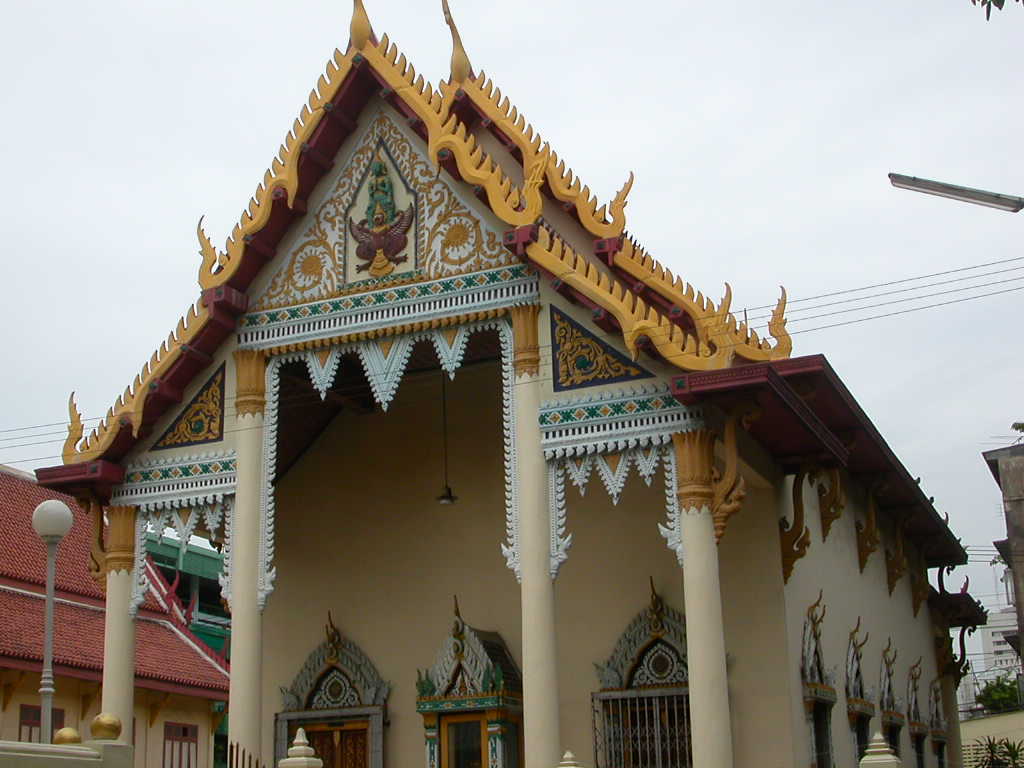
The Temples of Asia

FaceOff -- The Faces of Asia

Little Korea Mikawashima Tokyo Japan
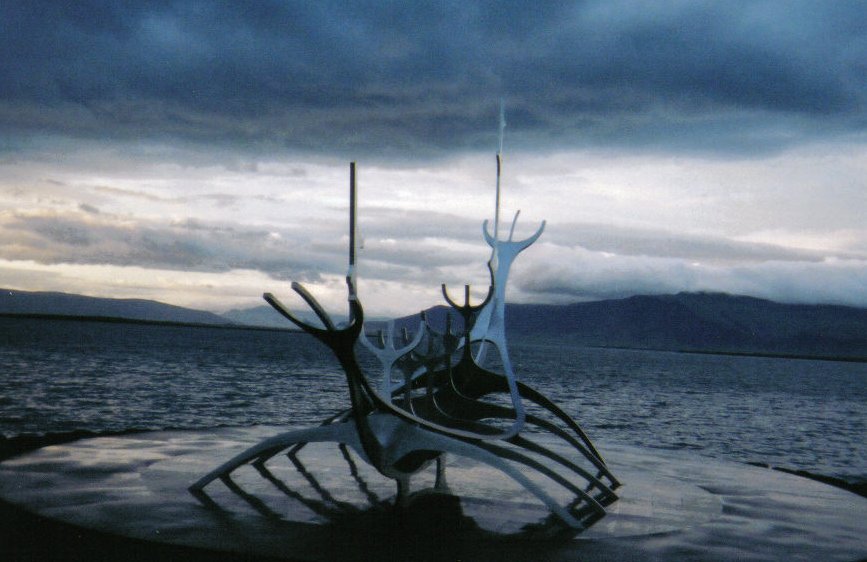
Vikings Horns -- The Warriors of Iceland
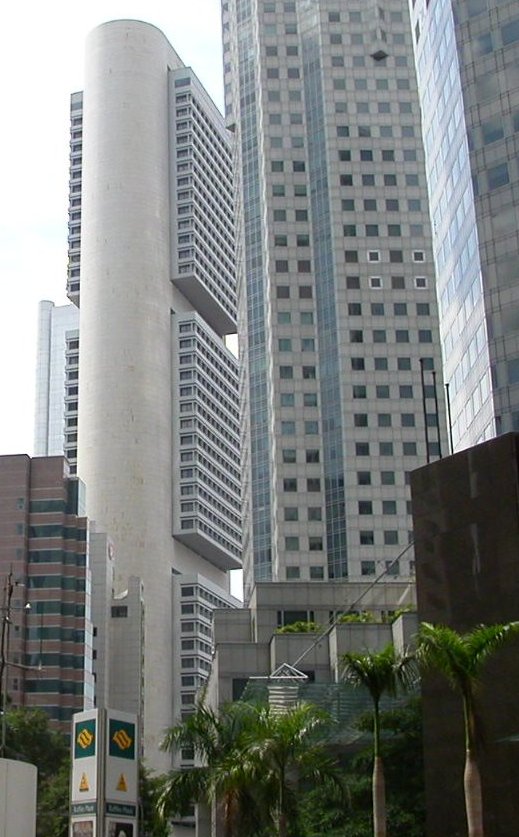
Singapore -- January 2003
Maps
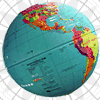
Interactive photographic map of the entire world!
Asian Recipes

Asian Recipes -- Indonesia
Australian Recipes
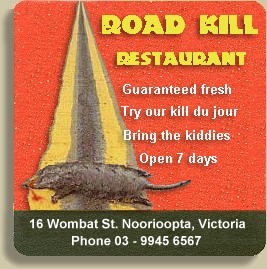
Australian Recipes -- Road Kill
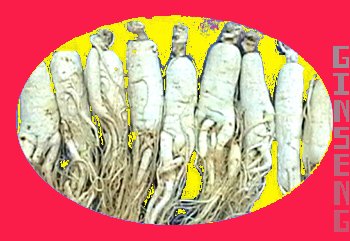
Ginseng High -- Korean Ginseng Gets You High!"
Reviews

101 Reykjavik -- Life In Iceland
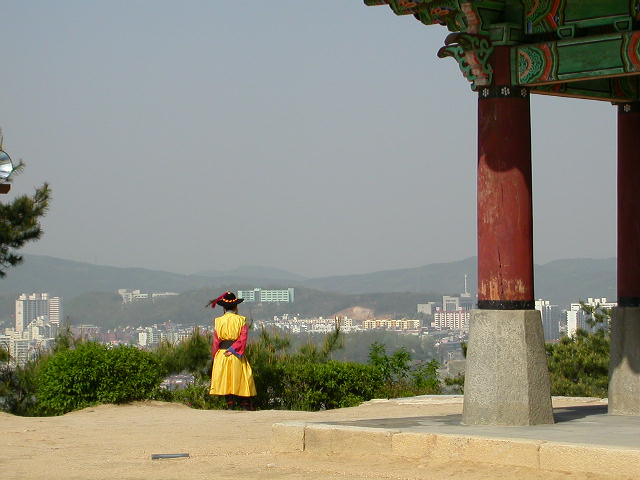
EAST ASIA
korea
THAT TRAVELLER'S BIBLE LONELY PLANET HAS DESCRIBED KOREA AS ONE OF THE UNDISCOVERED JEWELS OF ASIA, AND AS INTERESTING A DESTINATION AS CHINA OR JAPAN. I have to agree with this diagnosis, having being surprised during my first visit to the land in May 2002. I had never seriously thought of going there before, even though I had lived with a group of wild Korean backpackers for a time in a share house in Sydney Australia, and had been introduced to the wonders of kim'chi and barbequed Korean beef. Perhaps from time to time I had considered making a trip to Korea, as I want to see and understand the entire world -- that is my mission. But, it was never a serious plan, and Korea was a long way down my list of want-to-go-to-soon travel destinations -- well below Ethopia (currently about #6 on my list) and China (#12) and Mongolia (#16).
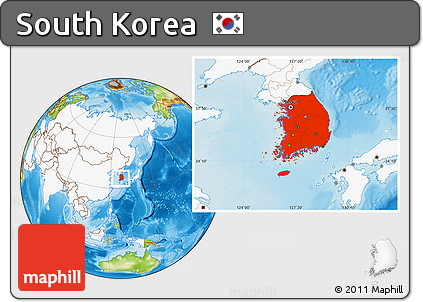
Physical Location Map of South Korea, highlighted continent
I just didn't expect it to be very interesting, even though I am sure it would be interesting in its own kind of way.
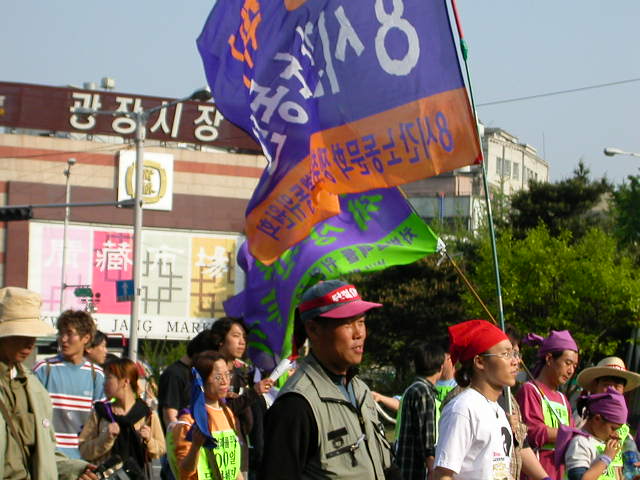 For some reason it didn't appeal to me so much. However, Fate has a way of intervening in your plans, and opening your mind to undreamt of possibilities. In May 2002, teaching English in Japan, and having just obtained a new job, I found myself sent on the familiar "Japanese visa run" to Seoul, South Korea. It has become standard for people working in Japan to make a brief trip to Korea, only one hour away by air, to renew their visas. This was the way I was introduced to Korea, and I am glad that the introduction was finally made.
Maybe it was because of the magnificent spring weather, but Seoul really grabbed me from the get-go. As I said before, I wasn't expecting much, but what I saw really impressed me. My first impression was that Korea seemed to be a strange combination of China and Japan -- there were the yellow and red apartment towers of the Chinese world, the wierd foods (insects, strange body parts, etc) that you associate with continental Asia -- but the temples in Seoul looked dead
For some reason it didn't appeal to me so much. However, Fate has a way of intervening in your plans, and opening your mind to undreamt of possibilities. In May 2002, teaching English in Japan, and having just obtained a new job, I found myself sent on the familiar "Japanese visa run" to Seoul, South Korea. It has become standard for people working in Japan to make a brief trip to Korea, only one hour away by air, to renew their visas. This was the way I was introduced to Korea, and I am glad that the introduction was finally made.
Maybe it was because of the magnificent spring weather, but Seoul really grabbed me from the get-go. As I said before, I wasn't expecting much, but what I saw really impressed me. My first impression was that Korea seemed to be a strange combination of China and Japan -- there were the yellow and red apartment towers of the Chinese world, the wierd foods (insects, strange body parts, etc) that you associate with continental Asia -- but the temples in Seoul looked dead  like the temples you see in Japan, only a little more rustic. Likewise, the restaurants -- the food might have looked Chinese, but there were tatami-mat areas where diners had to take off their shoes and sit on the floor, Japan-style.
My second impression of Seoul was that compared to Tokyo, it is actually quite an attractive city. There are numerous protruding yellow hills which tower above the city, covered with forests -- in fact, there is a national park in the heart of the city. That is something you will never see in Tokyo, where trees and hills are rare, and every centimeter of land is covered with concrete or metal or glass.
like the temples you see in Japan, only a little more rustic. Likewise, the restaurants -- the food might have looked Chinese, but there were tatami-mat areas where diners had to take off their shoes and sit on the floor, Japan-style.
My second impression of Seoul was that compared to Tokyo, it is actually quite an attractive city. There are numerous protruding yellow hills which tower above the city, covered with forests -- in fact, there is a national park in the heart of the city. That is something you will never see in Tokyo, where trees and hills are rare, and every centimeter of land is covered with concrete or metal or glass. 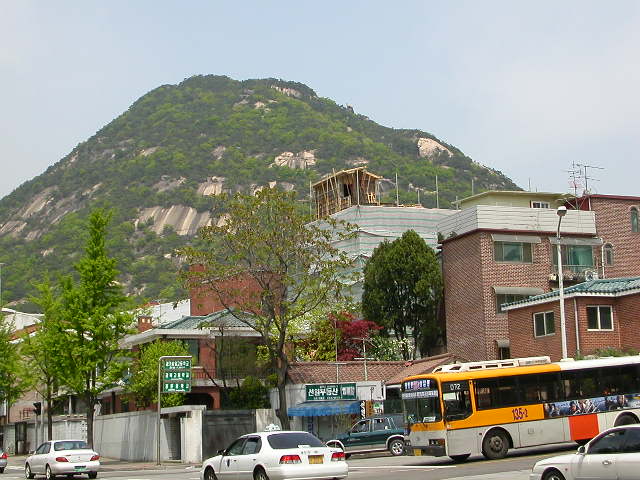 There are many parks in Seoul, some of them quite large. The Beijing Official Web Portal" puts it thus: "Surrounded by hills, Seoul has numerous small and large parks within easy reach. Places of historical interest―including Ch'anggysng, Ch'angdsk, Kysngbok, and Tsksu palaces and Chong-myo Shrine―annually attract large numbers of citizens and tourists. The city also has excellent sports and recreational facilities, notably the Seoul Sports Complex, which was built for the Asian Games in 1986 and the Olympic Games in 1988." Personally, the best attraction I have visited in Korea thus far is not in Seoul but a little out of the city, in the dormitory city of Suwon. I haven't been to China except in my dreams but the old walls around Suwon look to me exactly like the Great Wall of China would look, just on a smaller scale. It was amazing to visit there and feel so close to China -- an exotic experience indeed! The sense of history and culture was amazing. I visited Suwon during my second Korean trip, which took place in May 2003. I haven't been back to the peninsula since, and probably won't for a while, there being a whole world out there which I want to see first. But one day I will be back, and the next time, I want to get out of the Seoul area, and see more of the country.
There are many parks in Seoul, some of them quite large. The Beijing Official Web Portal" puts it thus: "Surrounded by hills, Seoul has numerous small and large parks within easy reach. Places of historical interest―including Ch'anggysng, Ch'angdsk, Kysngbok, and Tsksu palaces and Chong-myo Shrine―annually attract large numbers of citizens and tourists. The city also has excellent sports and recreational facilities, notably the Seoul Sports Complex, which was built for the Asian Games in 1986 and the Olympic Games in 1988." Personally, the best attraction I have visited in Korea thus far is not in Seoul but a little out of the city, in the dormitory city of Suwon. I haven't been to China except in my dreams but the old walls around Suwon look to me exactly like the Great Wall of China would look, just on a smaller scale. It was amazing to visit there and feel so close to China -- an exotic experience indeed! The sense of history and culture was amazing. I visited Suwon during my second Korean trip, which took place in May 2003. I haven't been back to the peninsula since, and probably won't for a while, there being a whole world out there which I want to see first. But one day I will be back, and the next time, I want to get out of the Seoul area, and see more of the country.
DOG SOUP AND CAT WINE.
NOW I AM BACK IN JAPAN TEACHING ENGLISH, BUT I STILL HAVE A LINK TO KOREA IN THE FORM OF TWO KOREAN STUDENTS WHO ARE STUDYING WITH ME. It is interesting to talk to them and learn a little of their culture and their language and their people. Sometimes we have gone out to Korean restaurants where I have been impressed by the flavour and excitement of Korean cuisine. Recently one of my Korean students suggested that we eat boshintang -- dog meat soup, which is apparently very healthy. I am willing to give it a try! In both Korean and Japanese "bo-shin" means something like "preserve the body", so I guess "boshintang" means the tonic which preserves the body and keeps you healthy. One of my Japanese students who is a dietician and has partaken in Korean dog flesh said it was not only delicious, but it also "made her face look radiant, and cleared up her skin." Apparently in Korea women eat dogs to enhance their beauty. For men, however, dog meat is an aphrodisiac which pumps up their sexual potency!
 If they don't want to eat dogs that is their business -- but it is pretentious to think they know better than the Koreans, whose culture is thousands of years of old. The health benefits of Korean foods like boshintang (and the world of Chinese medicine, for that matter) are dismissed out of hand as superstition, as if Koreans are just gullible fools who will believe anything. I am more concerned by the racism shown by animal liberationists towards Koreans who eat dog, rather than the cruel treatment the dogs face on their way to the table. At least the Koreans are our flesh and blood -- our brothers and sisters. The dogs on the other hand are just animals -- I mean, I like animals, but man has a natural drive to eat them. What is the difference between eating a dog and eating a cow? And we not only eat cows -- we milk them and then ferment their milk to make cheese and yoghurt and ice cream. How strange that must seem, to an Asian who has never drunk milk! It's all relative, as Einstein said -- what is normal to us is strange to somebody else, and vice versa. And frankly I find it totally boring to get all judgmental about what the stranger does -- it is so babyish to think that you alone have the ultimate truth, and that everybody else is wrong. Of course, I may be wrong, and feel free to send me an email if you think I am full of crap! I want to know what you think. But first, here is a recipe for dog soup, and instructions for how to find a dog-burger restaurant in Seoul. Enjoy :)
If they don't want to eat dogs that is their business -- but it is pretentious to think they know better than the Koreans, whose culture is thousands of years of old. The health benefits of Korean foods like boshintang (and the world of Chinese medicine, for that matter) are dismissed out of hand as superstition, as if Koreans are just gullible fools who will believe anything. I am more concerned by the racism shown by animal liberationists towards Koreans who eat dog, rather than the cruel treatment the dogs face on their way to the table. At least the Koreans are our flesh and blood -- our brothers and sisters. The dogs on the other hand are just animals -- I mean, I like animals, but man has a natural drive to eat them. What is the difference between eating a dog and eating a cow? And we not only eat cows -- we milk them and then ferment their milk to make cheese and yoghurt and ice cream. How strange that must seem, to an Asian who has never drunk milk! It's all relative, as Einstein said -- what is normal to us is strange to somebody else, and vice versa. And frankly I find it totally boring to get all judgmental about what the stranger does -- it is so babyish to think that you alone have the ultimate truth, and that everybody else is wrong. Of course, I may be wrong, and feel free to send me an email if you think I am full of crap! I want to know what you think. But first, here is a recipe for dog soup, and instructions for how to find a dog-burger restaurant in Seoul. Enjoy :)
Dog Soup is called, Gaejang, Gajangkuk, or Gujang, Gujangaeng,
Guyoukgeng. It has been called Bosintang from the later part of 1940,but during
the period of the 1988 Olympic games, it was banned to use the name of
Bosintang, so its name was replaced by Youngyangtang, Sacheoltang,
Mungmungtang. But nowadays, the name of Bosintang is widely used instead
of Youngyangtang. Bosintang is made by boiling dog meat with thin soy paste,
tearing it into pieces, putting ingredients such as green onion, leek, stalk of taro,
brake into broth, and boiling it again to make Bosintang. In Kyungsang
province, to get rid of the smell, perilla purple are put in the soup. Perilla are
also used for ridding the smell. Taste of perilla is similar to that of dog, and
it becomes a good match to dog meat. Side dishes of dog meat are Kimchi,
fresh peppers, and cucumbers. Adding a glass of Soju(liquor) enhances the
taste.
The standard amount of ingredients for one portion:
(2) Sauce
(3) Cooking instruction
(1) Ingredients
100g of boiled dog meat
500g of gravy
20g of green onion
10g of a leek
10g of perilla leaves
100g of taro stalk soaked in water.
8g of salt
2g of mashed garlic
3g of perilla
2g of red pepper
2g of mashed
ginger
a little amount of pepper.
After boiling the meat with gravy and stalk of taro for some time, boil again
after putting vegetables and other ingredients into it. Before eating, sprinkle
pepper on it and put into an earthen bowl. The stalk of taro is to be kept in cold
water one or two days to get rid of its smell and taste.
For more dog recipes, click here. And here's the information I promised about where to find quality dog burgers in Seoul:
Dogmeat hamburger restaurant in Korea: Renoir Restaurant, 143-5 Songpa-dong, Songpa-gu, Seoul. Tel: (02) 421-6345 Menu: dog meat hamburger, dogmeat cutlet, dogmeat meatball, dogmeat soup.
If the idea of dog soup freaks you out, Koreans also use cat meat -- not to eat, but to boil into a kind of cat wine. I kid you not -- and I am looking forward to drinking some someday, because it is meant to be good for curing arthritis, which I fear I may one day develop. There is a whole world of natural cures out there to prolong our life and fight disease, if we only open our mind to receiving them.
-- Korean Introduction - Seoul -- Suwon Castle - Girl Hunting --
Can't open random/donationsNo files in directory to display.

Contact us by email: tokyo japan
phone: (090) 6309-9341
mobile: e27c8ab8eddy7xj@t.vodafone.ne.jp